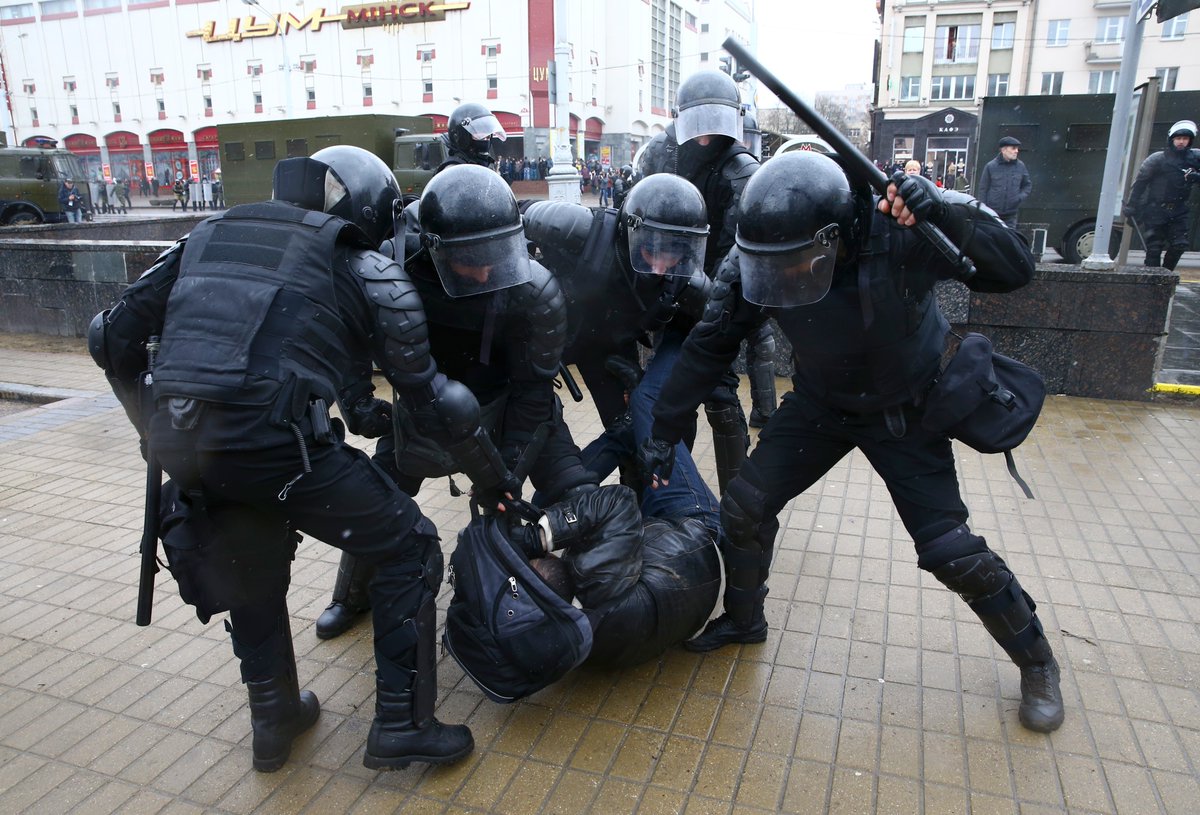Belarusian authorities resume political cycle: repressions follow liberalisation
 The situation has not changed
The situation has not changed

The Belarusian authorities have revived the cyclical political agenda, including preventive crackdown with the use of force during the Freedom Day rally in Minsk and a loyal attitude to the participants in the opposition events in the regions. The protest rally in Minsk has evidenced that the Belarusian society has freed from the post-Maidan syndrome and showed high self-organisation capacity during the event in the absence of opposition leaders. In the future, the authorities are likely to expand the framework for sanctioned and legal activity for the moderate opposition in order to reduce the potential for street protests.
The Freedom Day march in Minsk on March 25th, 2017 was marked by unprecedented and brutal detentions before and during the event.
The Belarusian leadership has managed to stretch in time the political cycle – liberalization followed by repressions – and move beyond the electoral campaigns. Simultaneously, Minsk has demonstrated a rather high mobilisation potential under political slogans, despite the pressure from the state media and security forces before and during Freedom Day, including the presence of armed officers and new special equipment to disperse demonstrations in the streets of Minsk. That said, in other towns (Vitebsk, Gomel, Brest and Grodno) the Freedom Day march led by the opposition, was sanctioned by the local authorities (except Vitebsk), albeit there were fewer participants than in February and March protests against the decree on social dependants.
The Belarusian leadership has depersonalised (removed leaders) the protest, preventively weakened the protest movement, and has not opted for the harsh crackdown like in 2010 with many injured and hundreds arrested. For instance, some party leaders were preventively arrested or detained (Lebedko, Rymashevsky, Gubarevich, Neklyaev, Logvinets, Severinets) before the event. Nikolai Statkevich has disappeared and his whereabouts are currently unknown. Some could not pass through the police cordons (Yanukevich and Kostusev) or participated in the rallies in the regions (Dmitriev, Korotkevich and Milinkevich).
Despite the lack of protest leaders, some demonstrators managed to self-organize and march down the Minsk centre. The march was unauthorised but gathered several thousand participants. Many were detained by the law enforcement and later released without charges. In addition, the Belarusian law enforcers used some tactics of the western riot police against peaceful protesters, allegedly in order to mitigate the criticism from Western capitals.
Nevertheless, the Belarusian authorities have used the entire set of propaganda and power mechanisms applied during the highly politicised 2006 and 2010 elections – criminal prosecution of the opposition leaders, preventive detentions and arrests of activists, harsh propaganda campaign in the state media and, finally, the crackdown on the protest action in Minsk with the use of force.
Overall, the mobilisation potential of the Belarusian society remains high and the authorities are likely to expand the legal framework for public participation in politics in order to absorb superfluous tension.
Subscribe to our newsletter




Situation in Belarus
Constitutional referendum: main consequences


 Video
Video
How to count the political prisoners: are the new criteria needed?


 Video
Video
Paternalism In Decline, Belarusian Euroscepticism, And The Influence Of Russia


 Video
Video











